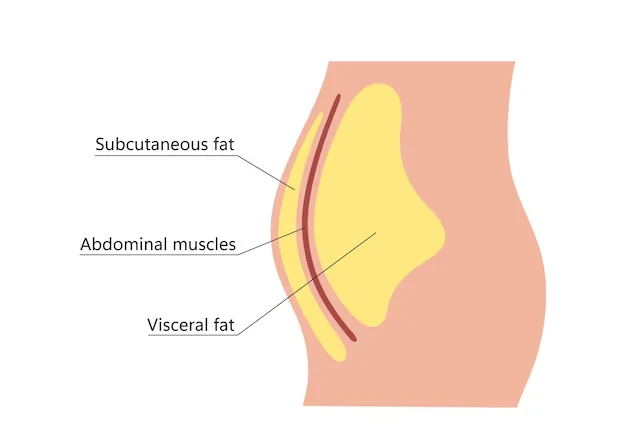
PROMO!
First order? Get 10% OFF with this code: 1storder
Written by

Metabolic health is one of the most widely studied areas in biology, touching on how cells regulate energy, store nutrients, and maintain balance across complex systems.
Researchers are investigating many pathways that influence metabolism, and peptides have become an important subject in this exploration. Among them, Tesamorelin has drawn attention in studies for its potential connections to energy balance and fat regulation.
Understanding Tesamorelin’s role begins with examining how it influences energy balance and fat metabolism, providing a foundation for exploring its impact on visceral fat and broader metabolic processes.
Explore Tesamorelin from Peptide Works, a synthetic peptide studied for its ability to reduce visceral fat and support healthier metabolic balance.

Researchers studying Tesamorelin report consistent reductions in visceral adipose tissue, a fat depot strongly linked to poor metabolic health. Many studies suggest that Tesamorelin stimulates growth hormone release, shifting the balance toward greater fat breakdown (lipolysis) and away from fat storage.
Although scientists continue to investigate the exact cellular pathways, comparisons with other peptides provide useful context. For example, researchers show that the AICAR peptide activates AMPK, a central energy sensor that drives fat oxidation and improves metabolic function in lab models.
By examining Tesamorelin alongside mechanisms like AMPK activation, scientists gain broader insights into how peptide pathways may influence fat metabolism. Recognizing the effect on energy balance highlights why visceral fat is such a critical factor for metabolic health and why targeting it could have far-reaching benefits.
Visceral fat does more than store energy, it actively interferes with the body’s metabolic balance. This tissue releases free fatty acids (FFAs) into the liver, where they promote excess glucose production and fat buildup, two processes strongly tied to insulin resistance.
At the same time, visceral fat secretes inflammatory cytokines such as TNF-α and IL-6, which block insulin signaling and sustain chronic low-grade inflammation. These disruptions weaken metabolic pathways, making it harder to control blood sugar, lipid levels, and overall energy use.
Because Tesamorelin has been studied for its effect on reducing visceral fat, researchers are interested in whether this peptide may help restore healthier metabolic function in controlled research settings. Understanding how visceral fat affects metabolism sets the stage for examining whether Tesamorelin can directly reduce this harmful fat and improve metabolic outcomes.

Controlled trials indicate Tesamorelin can significantly reduce visceral adipose tissue (VAT), the type of fat most strongly associated with impaired metabolic health. In phase III studies with individuals living with HIV-associated lipodystrophy, Tesamorelin led to an average 15–20% reduction in VAT after six months, compared with minimal change in the placebo group.
This reduction is notable because it occurred without major shifts in subcutaneous fat or overall body weight, suggesting Tesamorelin acts selectively on fat stored around the organs. Additional analyses report modest improvements in hepatic fat content and markers of insulin sensitivity, underscoring the peptide’s relevance in metabolic research and its potential to illuminate new pathways for managing visceral obesity.
These results naturally lead to considering other mechanisms that support metabolic health, such as AMPK activation and its peptide modulators.
AMP activated protein kinase (AMPK) acts as a central regulator of cellular energy balance. When activated, AMPK promotes glucose uptake, enhances fatty acid oxidation, and reduces lipid synthesis processes that directly support metabolic health. In research, AMPK activation has been linked to lower insulin resistance and improved mitochondrial efficiency.
Peptides that stimulate the AMPK pathway are of particular interest because they offer a way to influence metabolism at the cellular level. Unlike Tesamorelin, which works through growth hormone release, AMPK-focused compounds act by shifting cells toward energy-efficient states. This complementary mechanism highlights why researchers study AMPK peptides alongside Tesamorelin when exploring new strategies for managing visceral fat and metabolic disorders.
Understanding cellular energy regulation through AMPK helps explain how growth hormone pathways contribute differently but complementarily to overall metabolic function.
Discover AMPK Peptide from Peptide Works, a key activator of cellular energy pathways that promotes fat oxidation, glucose uptake, and improved metabolic efficiency.

Growth hormone (GH) has a major role in how the body regulates energy use and storage. It encourages the release of fatty acids from fat tissue, helps protect lean muscle mass, and aids in protein synthesis. GH also affects how the body handles carbohydrates. In some cases, it can temporarily lower insulin sensitivity, but this effect is offset by a greater reliance on fat for fuel.
Research with Tesamorelin provides a way to study these GH-driven effects in detail, especially how changes in fat distribution and glucose handling relate to metabolic health.
When compared with AMPK-focused peptides like AICAR, which improve energy use through cellular signaling, GH pathways highlight a distinct but complementary mechanism in metabolic regulation. While hormones guide metabolism, mitochondria also play a critical role in keeping cellular energy balanced.
Mitochondria set the pace of metabolism by deciding whether cells burn nutrients for immediate energy or store them for later use. When they operate efficiently, oxygen use, fat oxidation, and ATP generation stay balanced. If their function declines, energy pathways slow, oxidative stress builds, and cells become less responsive to metabolic signals a key step toward chronic disorders.
Research peptides provide tools to test these links. Tesamorelin allows scientists to study how hormone-driven changes in fat distribution alter mitochondrial workload. AMPK-targeted peptides and AICAR approach the problem differently, by boosting cellular energy sensors that fine-tune mitochondrial activity.
Exploring these pathways together helps identify which peptides show the most promise in advancing metabolic health research.
Explore AICAR Peptide from Peptide Works, a research compound known to activate AMPK, enhancing glucose regulation and supporting insulin sensitivity in metabolic studies.
Tesamorelin remains the leading peptide for visceral fat reduction and its links to metabolic improvement. The AMPK peptide highlights how energy sensing governs fat oxidation and glucose uptake. The AICAR peptide provides models for studying glucose balance and insulin sensitivity. Each targets a different part of the metabolic puzzle.
By comparing them side by side, researchers can see how peptide pathways converge on shared goals: reducing harmful fat, stabilizing glucose, and improving energy regulation. Together, these peptides offer complementary insights that deepen our understanding of metabolic health.
Understanding their combined potential points toward future directions for Tesamorelin and other peptides in research.
The future of Tesamorelin in metabolic health research remains at an active but investigational stage. Clinical findings on visceral fat reduction and metabolic markers suggest it could be a valuable model for studying how fat distribution affects insulin sensitivity, liver function, and mitochondrial activity. As science continues to map the interplay between hormone signaling and energy pathways, Tesamorelin may provide an important reference point alongside AMPK activators and AICAR in advancing metabolic research.
At Peptide Works, we provide research-grade peptides worldwide, supporting discoveries that shape the future of metabolic health.
All products discussed are supplied for research purposes only and are not intended for human use.
[1] Stanley TL, Feldpausch MN, Oh J, Branch KL, et al. Effect of tesamorelin on visceral fat and liver fat in HIV-infected patients with abdominal fat accumulation: a randomized clinical trial. JAMA. 2014 Jul 23-30;312(4):380-9.
[2] Fourman LT, Czerwonka N, Feldpausch MN, Weiss J, et al. Visceral fat reduction with tesamorelin is associated with improved liver enzymes in HIV. AIDS. 2017 Oct 23;31(16):2253-2259.
[3] Kim HI, Han Y, Park J. AMP-Activated Protein Kinases in Health and Disease. Int J Mol Sci. 2025 Aug 21;26(16):8075.
[4] Zhang Z, Svensson KJ. Discovery of peptides as key regulators of metabolic and cardiovascular crosstalk. Cell Rep. 2025 Jun 24;44(6):115836.
ALL CONTENT AND PRODUCT INFORMATION AVAILABLE ON THIS WEBSITE IS FOR EDUCATIONAL PURPOSES ONLY.
DISCLAIMER: These products are intended solely as a research chemical only. This classification allows for their use only for research development and laboratory studies. The information available on our Peptide Works website: https://peptide-works.com/ is provided for educational purposes only. These products are not for human or animal use or consumption in any manner. Handling of these products should be limited to suitably qualified professionals. They are not to be classified as a drug, food, cosmetic, or medicinal product and must not be mislabelled or used as such.
Peptide Works
Related Articles

How effective could Orexin Addiction Therapy be?
Have you ever wondered why some people find it so hard to stop addictive habits, even when they truly want

Can NAD Therapy Improve Cognitive Performance?
NAD Therapy is gaining attention in research for its possible role in brain health. NAD+ (nicotinamide adenine dinucleotide) is a

Enhancing Energy with NAD+ Supplements
Energy is the driving force behind focus, movement, and recovery. When cells have less energy to work with, the body